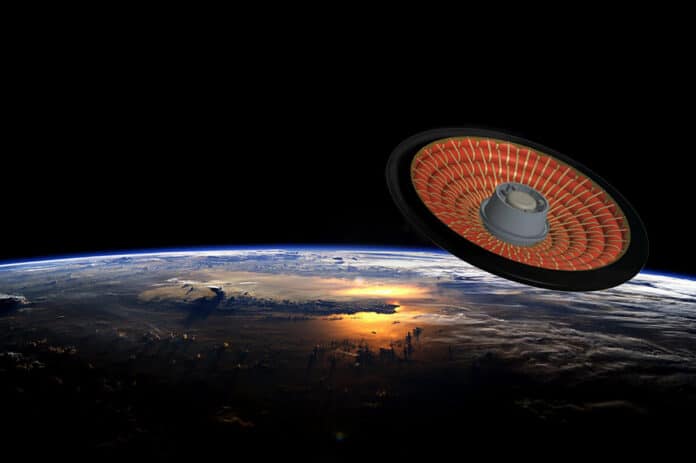NASA’s Low-Earth Orbit Flight Test of an Inflatable Decelerator (LOFTID) technology is ready for its first technology demonstration flight. The space agency aims to test a large inflatable aeroshell that could one day be used to deploy large payloads on Mars safely and on other planets in the Solar System.
LOFTID is scheduled to launch in November as a secondary payload with the National Oceanic and Atmospheric Administration’s JPSS-2 polar-orbiting satellite from Vandenberg Space Force Base in California. After hitching a ride to space aboard a ULA Atlas V rocket, LOFTID will inflate and then descend back to Earth from low-Earth orbit to demonstrate how the inflatable aeroshell, or heat shield design, can slow down a spacecraft to survive atmospheric entry.
When a spacecraft enters an atmosphere, aerodynamic forces act upon it. Specifically, aerodynamic drag helps to slow it down, converting its kinetic energy into heat. Utilizing atmospheric drag is the most mass-efficient method to slow down a spacecraft.
Mars’s atmosphere is much less dense than that of Earth and provides an extreme challenge for aerodynamic deceleration – as has been seen on several occasions with Mars rover landings. The atmosphere is thick enough to provide some drag but too thin to decelerate the spacecraft as quickly as it would in Earth’s atmosphere. This means that entry into the atmosphere is much riskier and requires even greater protection than it does on Earth.
LOFTID’s large deployable aeroshell – an inflatable structure protected by a flexible heat shield – acts as a giant brake as it traverses the Martian atmosphere. The large aeroshell creates more drag than a traditional, smaller rigid aeroshell. It begins slowing down in the upper reaches of the atmosphere, allowing the spacecraft to decelerate sooner, at a higher altitude, while experiencing less intense heating.
LOFTID is demonstrating a large aeroshell – 6 meters in diameter (about 20 feet) – entry from low Earth to demonstrate this technology in conditions relevant to many potential applications. NASA says this technology enables a variety of proposed NASA missions to destinations such as Mars, Venus, and Titan as well as return to Earth.
For the upcoming demonstration test, LOFTID will inflate as it descends from low-Earth orbit. If all goes according to the plan, NASA says the technology could be used in future crew landing missions and for sending robotic missions to Mars and returning heavier payloads to Earth.
